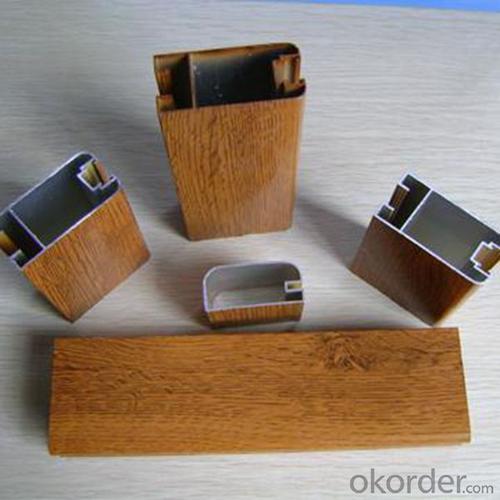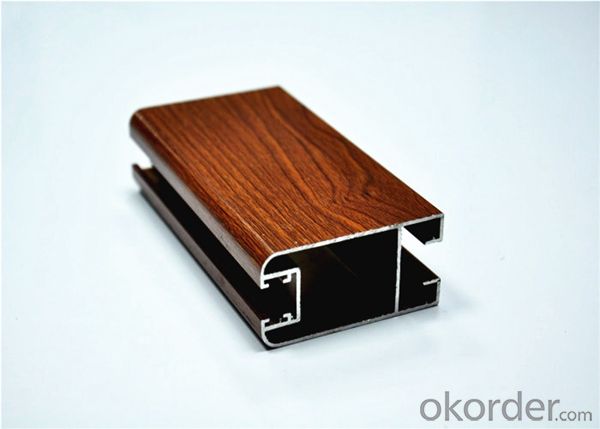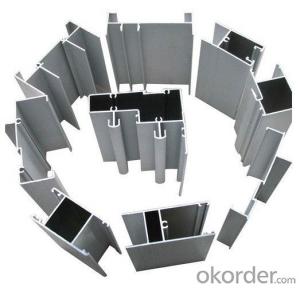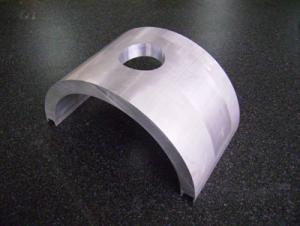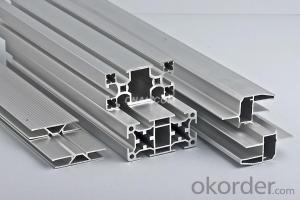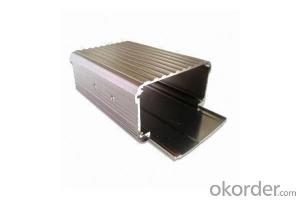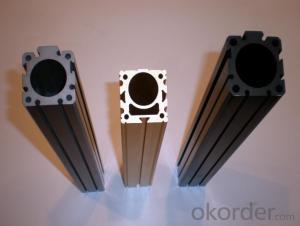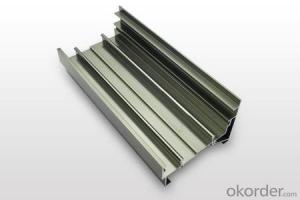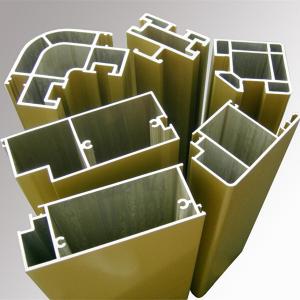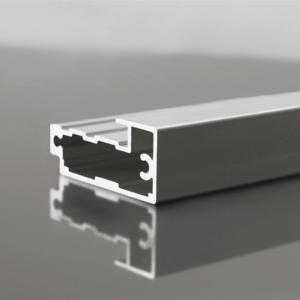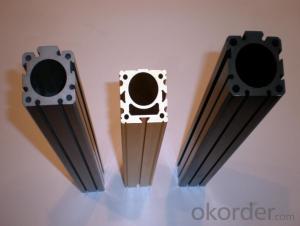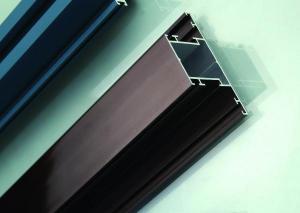Aluminum Siding Profiles - Extruded Aluminum Alloy Profiles Prices Made in China
- Loading Port:
- Shanghai
- Payment Terms:
- TT OR LC
- Min Order Qty:
- 5 m.t.
- Supply Capability:
- 10000 m.t./month
OKorder Service Pledge
OKorder Financial Service
You Might Also Like
Specification
1. Specification of Extruded Aluminum Alloy Profiles Prices Made in China
Alloy | AA1050,AA1060, AA1070, AA1100 |
Temper: | H12, H14, H16, H18, H22, H24, H26, H32,HO, F |
Thickness: | 0.10-500mm |
Width: | 10mm- 2200mm |
Standard: | GB/T3880-2006, ASTM, ISO, EU standard |
Special Specification is available on customer’s requirement | |
2. Application of Extruded Aluminum Alloy Profiles Prices Made in China
wall cladding, ceilings, bathrooms, kitchens and balconies, shutters, doors,windows…
3. Feature of Extruded Aluminum Alloy Profiles Prices Made in China
Surface Quality :
Be free from Oil Stain, Dent, Inclusion, Scratches, Stain, Oxide Decoration, Breaks, Corrosion, Roll Marks, Dirt Streaks and other defect which will interfere with use,
Mochenical Property:
Chemical Composite and Mechanical Property
4. Certificate:
SGS and ROHS(if client request, paid by client), MTC(plant provided), Certificate of Origin(FORM A, FORM E, CO), Bureau Veritas and SGS (if client request, paid by client), CIQS certificate
5. Image of Extruded Aluminum Alloy Profiles Prices Made in China
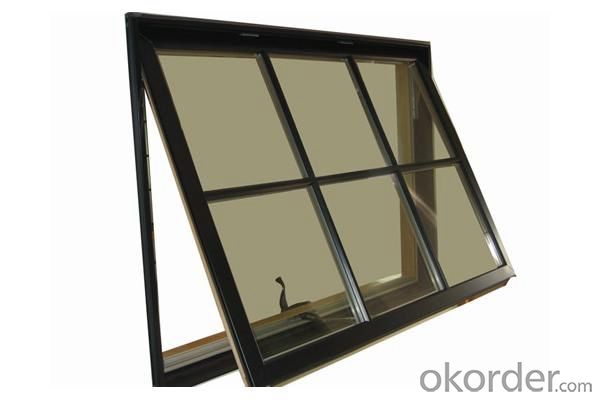
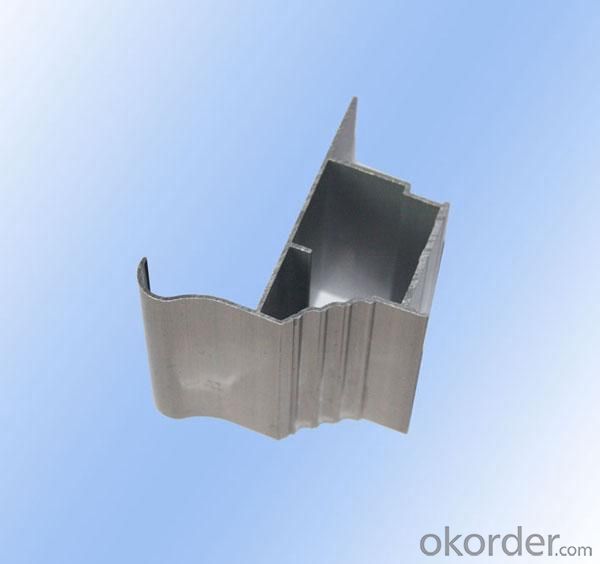
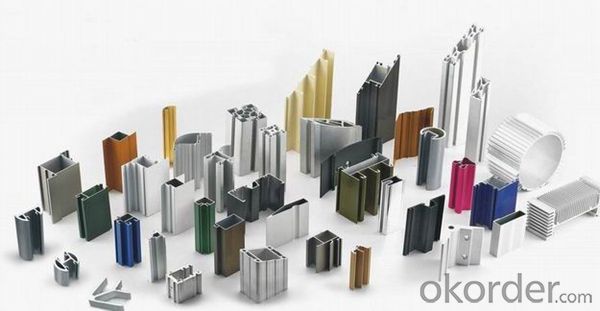
6. Package and shipping of Extruded Aluminum Alloy Profiles Prices Made in China
First, plastic cloth with drying agent inside; Second, Pearl Wool; Third, wooden cases with dry agent, fumigation wooden pallets, aluminum surface could cover blue PVC film
7. FAQ
Question 1: What is your MOQ?
We accept one ton per type for an order. But the detail we could negotiate.
Question 2: What is your normal terms of payment?
We always trade with you by T/T. But we also accept the L/C as you require.
Question 3: How many kinds of the surface treatment we can choose?
You could choose different color of powder coated. Anodized of black. matte silver, nature, champagne, bronze color. Mill finished. Wooden finished and printed.etc.
Question 4: Can you supply OEM services?
We offer OEM services for 17 years.
Question 5: How many days for opening the mould?
Normally about 10 days.According to the difficulty of your drawing.
Question 6: Can i choose the package what i want?
Yes, of course. We offer various kinds of package.e.g.PE foam. Shrink film. Wrapping paper.
But we would give you professional suggestion of package.
- Q: What are the recycling capabilities of aluminum profiles?
- Aluminum profiles have excellent recycling capabilities. They can be easily recycled without losing their quality or properties. The recycling process involves melting the profiles down, removing any impurities, and then casting them into new shapes or products. This recycling process can be repeated indefinitely, making aluminum profiles a highly sustainable and eco-friendly material.
- Q: What are the regular colors of aluminum profiles?
- The regular colors of aluminum profiles of different treatment processes are as follows:Electrophoresis: Champagne, silver, bronze, stainless steel color, golden yellow, blackOxidation: Champagne, silver, bronze, stainless steel color, golden yellow, blackSpraying: any colorAluminum in the paint before the first oxidation of aluminum extrusion profiles, Aluminum Alloy good corrosion resistance, the surface is not strong, should be to increase the aluminum corrosion resistance, wear resistance and surface by anodic oxidation surface treatment of the appearance of the.
- Q: What are the different alloys available for aluminum profiles?
- There are several different alloys available for aluminum profiles, each with its own unique properties and characteristics. Some commonly used alloys include: 1. 6061-T6: This is one of the most widely used alloys for aluminum profiles. It offers excellent strength, corrosion resistance, and weldability. It is often used in structural applications such as frames, beams, and supports. 2. 6063-T5: This alloy is known for its good formability and extrudability, making it ideal for creating complex shapes and designs. It has good corrosion resistance and is often used in architectural applications, such as window frames and curtain walls. 3. 7075-T6: This alloy offers high strength and toughness, making it suitable for applications that require exceptional strength, such as aerospace components and high-stress structural parts. 4. 6082-T6: This alloy is similar to 6061-T6 in terms of strength and corrosion resistance, but it offers better machinability. It is commonly used in automotive and transportation industries. 5. 3003-H14: This alloy is primarily used for its excellent resistance to corrosion. It is often used in marine applications, as well as in chemical and food processing industries. These are just a few examples of the many alloys available for aluminum profiles. The choice of alloy depends on the specific requirements of the application, such as strength, corrosion resistance, formability, and machinability.
- Q: Are aluminum profiles suitable for partition walls?
- Yes, aluminum profiles are suitable for partition walls. They are lightweight, durable, and offer excellent structural support. Additionally, aluminum profiles are easy to install, maintain, and can be customized to fit different design requirements. They also provide good thermal and sound insulation properties, making them a popular choice for partition walls in various settings such as offices, homes, and commercial spaces.
- Q: What are the different bending and forming options for aluminum profiles?
- Aluminum profiles offer various options for bending and forming, each with its own benefits and applications. Some commonly used methods are as follows: 1. Cold bending: This widely employed technique involves bending the aluminum profile using external force, without the need for heat. Cold bending can be performed manually or with machinery like press brakes or rollers. It is suitable for creating simple shapes and can be cost-effective for low volume production. 2. Heat bending: By heating the aluminum profile to a specific temperature, it becomes more malleable and easier to bend. Heat bending is often utilized for complex or precise shapes that cannot be achieved through cold bending. Skilled operators and specialized equipment, like heating lamps or furnaces, are necessary to ensure accurate results. 3. Roll forming: This process gradually shapes the aluminum profile into the desired form by passing it through a series of rollers. Roll forming is ideal for creating continuous shapes or long lengths of profiles with consistent dimensions. It finds common applications in industries such as construction, automotive, and furniture manufacturing. 4. Stretch forming: In this method, the aluminum profile is clamped at its edges and stretched over a form or mold. Stretch forming allows for the creation of complex curves and contours, making it suitable for applications that require intricate designs or unique shapes. Aerospace, architectural, and automotive industries often use stretch forming. 5. Hydroforming: Hydroforming utilizes pressurized fluid to shape the aluminum profile into a mold. The fluid pressure forces the metal to conform to the shape of the mold, resulting in precise and high-quality formed parts. Hydroforming is particularly advantageous for creating lightweight and structurally efficient components, making it popular in the automotive and aerospace industries. These bending and forming options offer a wide range of possibilities for shaping aluminum profiles according to specific design requirements. The choice of method depends on factors such as the complexity of the desired shape, production volume, cost considerations, and the specific industry application.
- Q: Can aluminum profiles be used in the production of audiovisual equipment?
- Yes, aluminum profiles can be used in the production of audiovisual equipment. Aluminum is a versatile and widely used material in various industries, including the audiovisual sector. Aluminum profiles can be used to construct frameworks, enclosures, and mounting systems for audiovisual equipment such as speakers, projectors, and television screens. The lightweight nature of aluminum makes it easy to handle and transport, while its high strength-to-weight ratio ensures durability and stability. Additionally, aluminum is corrosion-resistant, which is crucial for equipment that may be exposed to moisture or humidity. Aluminum profiles can also be easily customized and fabricated to meet specific design requirements, allowing for flexibility in the production of audiovisual equipment. Overall, the use of aluminum profiles in the production of audiovisual equipment offers numerous advantages in terms of strength, weight, corrosion resistance, and design possibilities.
- Q: What does "3030W" W mean for European standard industrial aluminum?
- This refers to the 3030 heavy aluminum profiles. General aluminum profile manufacturers will make a number of their own products, European standard 3030 series has a variety of specifications, such as Jing Teng aluminum European standard 3030R, referring to the European standard 3030 fan, 3030G refers to the 3030 GB profiles. In short, look at your own needs,
- Q: This question asks for a comparison between aluminum profiles and other materials used in constructing frames, focusing on their characteristics and performance.
- <p>Aluminum profiles are favored for building frames due to their high strength-to-weight ratio, making them lightweight yet durable. They offer excellent corrosion resistance, which is superior to materials like steel, which can rust. Aluminum profiles are also easy to machine and form, allowing for complex designs. Compared to wood, they are more resistant to weathering and pests. However, they may not have the same aesthetic appeal as wood or the thermal insulation properties of some plastics. Overall, aluminum profiles are a strong choice for structural integrity and longevity in frame construction.</p>
- Q: Are aluminum profiles suitable for exhibition displays?
- Exhibition displays can benefit greatly from the use of aluminum profiles. This material is both lightweight and durable, making it perfect for constructing modular structures that can be effortlessly transported and assembled at various exhibition venues. These profiles are versatile and can be employed to build display walls, stands, booths, and other components of an exhibition. One major advantage of using aluminum profiles for exhibition displays lies in their adaptability. They can be easily modified and adjusted to meet specific design requirements, enabling the creation of unique and captivating displays. Furthermore, aluminum profiles can be easily connected and disassembled, which makes them a practical choice for exhibitions that demand frequent setup and teardown. Another benefit of utilizing aluminum profiles for exhibition displays is their visual appeal. Aluminum has a sleek and modern appearance that can enhance the overall impact of an exhibition. It can also be finished with various coatings or colors to match the branding or theme of the event, further augmenting the overall presentation. Additionally, aluminum profiles offer exceptional stability and strength, ensuring that exhibition displays can withstand the demands of a bustling exhibition environment. They are also resistant to corrosion, which is crucial when considering the longevity and durability of the display. In conclusion, aluminum profiles are a suitable option for exhibition displays due to their lightweight nature, durability, versatility, aesthetic appeal, and strength. They provide the necessary stability and can be easily customized to create visually appealing and functional exhibition displays.
- Q: Can aluminum profiles be used for soundproofing?
- Yes, aluminum profiles can be used for soundproofing to a certain extent. Aluminum profiles are commonly used in the construction industry for various purposes, including window frames and door frames. When used in soundproofing applications, aluminum profiles can help reduce noise transmission through windows and doors. Aluminum is a lightweight and durable material that can effectively block or dampen sound waves. It has good structural integrity, which allows for the creation of tight seals when installed properly. This helps in reducing sound leakage and improving sound insulation. To enhance soundproofing, aluminum profiles can be combined with other materials like rubber gaskets or weatherstripping, which further improves the sealing properties. Additionally, double or triple glazing with laminated glass can also be used in conjunction with aluminum profiles to provide better sound insulation. However, it is important to note that while aluminum profiles can contribute to soundproofing, they may not provide the same level of sound reduction as other specialized soundproofing materials such as acoustic panels or insulation. The effectiveness of aluminum profiles in soundproofing also depends on factors such as the thickness and quality of the profiles, the design of the window or door system, and the overall construction of the building. In conclusion, while aluminum profiles can help in reducing noise transmission through windows and doors, they should be considered as part of a comprehensive soundproofing strategy rather than the sole solution.
Send your message to us
Aluminum Siding Profiles - Extruded Aluminum Alloy Profiles Prices Made in China
- Loading Port:
- Shanghai
- Payment Terms:
- TT OR LC
- Min Order Qty:
- 5 m.t.
- Supply Capability:
- 10000 m.t./month
OKorder Service Pledge
OKorder Financial Service
Similar products
Hot products
Hot Searches
Related keywords


